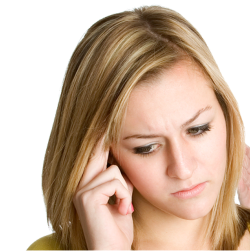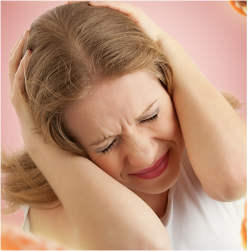 We’ve all had it before…
We’ve all had it before…
A headache that appears for no reason and is not only annoyingly painful, but it also spoils our day. Now, imagine headaches that are so painful that they make you feel nauseous, lose vision temporarily and even vomit.
That’s what people suffering from severe migraine headaches go through. Besides that, they may also feel weak, irritable and unwell.
Millions of people suffer from migraines and the majority of them are women because they are 3 times more likely to have migraines than men.
Not All Migraine Headaches Come About Equally
There are different types of migraines and they affect different people differently. The symptoms displayed often vary amongst individuals. That is one of the reasons treating migraines is so difficult and coming up with a cure is even tougher.
Till today, doctors aren’t able to pin point why some people are more prone to migraines than others. While genetics has been highlighted as a reason, there are still no concrete findings as far as triggers and other reasons go.
Some of the Migraine Headaches People Suffer From:
1. Benign exertional headache
This is a vascular headache that may occur when a person exerts themselves through some physical activity such as running or lifting something heavy. Some people have had this migraine just from coughing or sneezing.
2. Hemiplegic migraine
This migraine causes a temporary paralysis in the muscles on one side of the body. People who experience this migraine may also have impaired vision and feel giddy due to vertigo.
3. Status migrainosus
This is an extremely severe migraine that usually requires the sufferer to be hospitalized. The only good thing about it is that it is a rare condition.
4. Ophthalmologic migraine
If a migraine causes pain around the eyes and causes the eyelids to be droopy, you most probably have ophthalmologic migraine. It is also accompanied by temporary vision loss.
5. Basilar artery migraine
This type of migraine is the result of problems with a blood vessel at the base of the skull. Adolescent women or young female adults are more prone to this type of migraine. It’s accompanied by other unpleasant symptoms such as impaired vision, vertigo, loss of motor control, etc.
6. Headache-free migraines
These are migraines that have other symptoms such as nausea, vomiting, temporary vision loss, etc. but there are no headaches.
Migraines do have some similar symptoms to headaches. However, normal headaches do have symptoms that are quite distinctive and this helps doctors diagnose whether you’re having normal headaches or migraines.
Cluster headaches are vascular headaches that are known to strike a couple of times a day. They usually appear suddenly and on one side of the head.
There is a stabbing pain behind the eye and the pain is so severe that the eyes may tear up and even the nose will run. This usually happens on just one side. Alcohol and smoking have been linked to cluster headaches and men are more prone to them.
Tension headaches are becoming more and more frequent nowadays and this could be due to the high levels of stress and fatigue most people face. Tension headaches may be caused by other health problems too such as poor posture, bruxism, arthritis, etc.
Both cluster headaches and tension headaches can be treated with over-the counter medication and tend to go away quite fast. Migraines are usually much more severe and may require prescription medication. You should always consult a doctor to get a proper diagnosis and confirmation.
